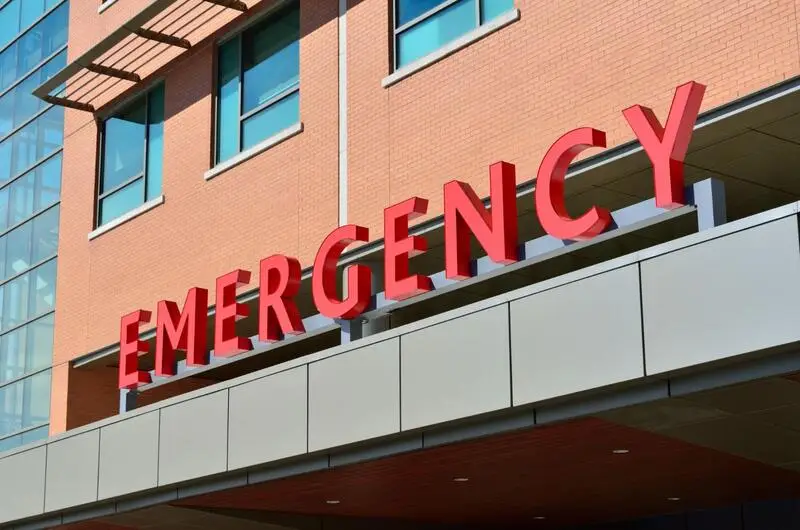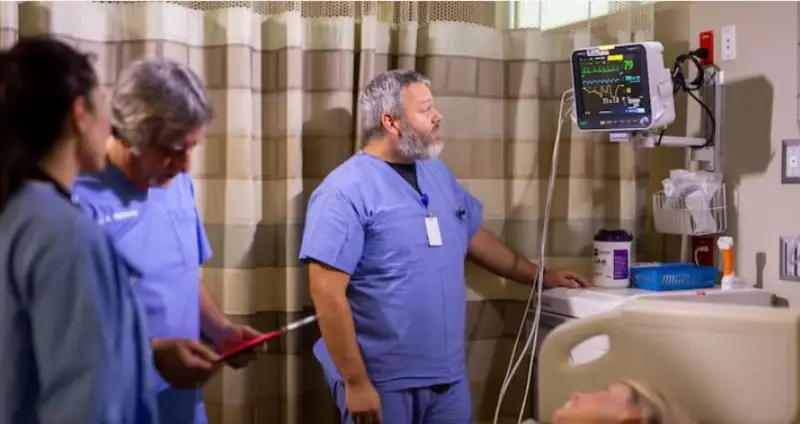The saying “Prevention is better than cure” certainly holds true for precipitated withdrawal treatment. While it’s a treatable condition, it can be so distressing that the fear of it may hold people back from seeking opioid dependence treatment.
Nonetheless, precipitated withdrawal can be avoided, and it shouldn’t keep you away from returning to a sober, healthy life.
Keep reading this article to learn about the symptoms, dangers, and treatment of precipitated withdrawal, among other things you should know about this condition.
What is Precipitated Withdrawal?

Precipitated withdrawal is a type of withdrawal that is unintentionally triggered by medications typically used to treat opioid use disorder (OUD).
Unlike regular opioid withdrawal, precipitated withdrawal doesn’t occur gradually as the body detoxes from opioids.
Instead, it is suddenly brought on by the premature administration of a partial opioid agonist or an opioid antagonist. Such medications are often used to reduce the severity and duration of opioid withdrawal symptoms. However, administering them while another opioid is still in the system can have the opposite effect and cause the onset of intense drug withdrawal symptoms.
Some medications that may cause precipitated withdrawal include:
- Buprenorphine
- Suboxone (buprenorphine/naloxone)
- Naloxone
More often than not, precipitated withdrawal happens when people addicted to opioids undergo medication-assisted treatment (MAT). However, it can also happen when naloxone is administered to counteract the effects of opioids in case of an opioid overdose.
Why Does Precipitated Withdrawal Occur?
Precipitated withdrawal occurs as a result of taking an opioid agonist (e.g., buprenorphine) or an opioid antagonist, such as naloxone, when a full opioid agonist is still in the system. More often than not, this withdrawal occurs when opioid-dependent people take medications used to treat opioid addiction too early in their recovery.
For example, if you enter medication-assisted treatment for oxycodone addiction and take buprenorphine too soon after taking oxycodone, you may experience precipitated withdrawal symptoms.
More specifically, precipitated withdrawal induced by buprenorphine or another partial opioid agonist occurs because these drugs latch onto the brain’s opioid receptors more strongly than hydrocodone, Percocet, and other full opioid agonists.
In turn, if you haven’t properly detoxed before taking a partial opioid agonist, it will override any opioid in your system and bind to opioid receptors instead, causing precipitated withdrawal symptoms.
Similarly, opioid antagonists, such as naloxone, trigger precipitated withdrawal symptoms by attaching to opioid receptors in the brain and blocking the effects of opioids in the system.
The bottom line is, precipitated withdrawal occurs due to certain medications preventing opioids from binding to and activating opioid receptors. Since this phenomenon happens due to poorly timed drug administration, the key to avoiding precipitated withdrawal is to wait until you’re in a state of mild-to-moderate opioid withdrawal before taking medication.
What Are The Symptoms of Precipitated Withdrawal?
The symptoms of precipitated withdrawal are very similar to the usual opioid withdrawal symptoms, with the key difference between the two being intensity.
Precipitated withdrawal happens suddenly and thus usually induces very intense, often painful symptoms, though this may depend on the severity of your opioid dependence.
Just like with regular opioid withdrawal, precipitated withdrawal symptoms typically feel like the complete opposite of the effects of opioids. For instance, while opioids tend to make people feel relaxed and euphoric, precipitated withdrawal often induces severe anxiety.
The most common symptoms of precipitated withdrawal include:
- Abdominal cramps
- Anxiety
- Changes in blood pressure
- Chills
- Confusion
- Depression
- Diarrhea
- Enlarged pupils
- Fever
- Goosebumps
- Headache
- Increased heart rate
- Muscle and joint pain
- Nausea
- Runny nose
- Sleep disturbances
- Sweating
- Vomiting
How Long Does Precipitated Withdrawal Last?
The duration of precipitated withdrawal may vary depending on:
- Medication that triggered the withdrawal and its dosage
- Metabolism
- Overall health condition
- Past drug withdrawal history
- Precipitated withdrawal treatment (if any)
- The severity of opioid addiction
Depending on the medication, precipitated withdrawal symptoms may start an hour or two after drug administration.
While these symptoms are usually short-lived and subside within several hours or a day, they can be agonizing. In severe cases, if the individual doesn’t receive any precipitated withdrawal treatment, symptoms may last several days.
Risks and Dangers of Precipitated Withdrawal
Although some people going through precipitated withdrawal require hospitalization, this condition is rarely life-threatening. Still, like regular withdrawal, it may lead to relapse, which can be fatal.

Besides that, precipitated withdrawal can also lead to dehydration and electrolyte imbalance. Due to excessive sweating, vomiting, and diarrhea, it’s crucial to stay hydrated. Hospitalized patients are usually closely monitored and administered IV fluids.
Opioid withdrawal, whether it’s precipitated or not, can be particularly dangerous during pregnancy and is associated with preterm birth and miscarriage. If you’re pregnant and struggling with opioid addiction, seek medical help immediately.
Patients with pre-existing health problems and mental health disorders may also be at a heightened risk of precipitated withdrawal complications. So, if you or someone you love is displaying the following symptoms while going through precipitated withdrawal, call 911 or go to an emergency room as soon as possible:
- Body stiffness
- Chest pain
- Difficulty breathing
- Extreme confusion
- Hallucinations
- Irregular heartbeat
- Loss of consciousness
- Psychosis
- Severe lightheadedness
- Suicidal ideation
- Trouble moving, talking, or staying awake
Precipitated Withdrawal Treatment
When it comes to precipitated withdrawal treatment, one thing you should never do is self-medicate with opioids. While they can reduce precipitated withdrawal symptoms, it’s no news that relapse may lead to overdose and death. Not to mention, taking opioids is counterproductive when you’re trying to quit them.
If you’re struggling with precipitated withdrawal symptoms, it’s in your best interest to seek medical attention. Depending on the severity of your symptoms, consider discussing precipitated withdrawal treatment options with your doctor or going to an emergency room.
In the meantime, make sure to drink plenty of water and eat water-rich foods (cucumber, celery, melon, etc.) to prevent dehydration. You might also want to take over-the-counter medication to ease specific symptoms (e.g., ibuprofen for pain). While home remedies cannot stop precipitated withdrawal, they can help manage it.
As paradoxical as it may sound, buprenorphine can be prescribed to relieve precipitated withdrawal symptoms. A 2021 study found that buprenorphine-precipitated withdrawal can be effectively treated by administering multiple small doses of buprenorphine.
ANR Treatment for Opioid Addiction
If you’re looking for an effective opioid dependence treatment that won’t put you at risk of precipitated withdrawal, Accelerated Neuro-Regulation (ANR) is exactly what you need!

ANR is an innovative opioid dependence treatment that can help you make a long-term recovery from opioids by restoring your brain to its natural state before addiction. Unlike other treatments, ANR addresses the root cause of opioid addiction and thus negates the risk of relapse.
Here are some advantages of ANR compared to traditional opioid dependence treatments, including medication-assisted treatment:
- Speed. Most opioid addiction treatments require weeks, months, or even years to work, and they can still lead to relapse. Meanwhile, with an average hospital stay of just 36 hours, ANR can help you fully recover from opioid addiction in a matter of days!
- No use of replacement drugs. The ANR treatment doesn’t involve drug replacement therapy. As such, it doesn’t put you at risk of experiencing precipitated withdrawal or becoming addicted to replacement drugs.
- Safety. The ANR treatment is tailored to each patient’s medical history and needs, eliminating the risk of side effects. Not only that, but it is also performed under sedation by highly skilled medical professionals in an ICU setting of accredited hospitals.
Key Takeaways
Now that you know more about precipitated withdrawal treatment, symptoms, and risks, hopefully, it won’t discourage you from undergoing opioid dependence treatment.
While precipitated withdrawal can lead to mental and physical suffering, the good news is, it can be prevented. One way to do it is by administering partial opioid agonist or opioid antagonist medication at the right time, no sooner than the onset of opioid withdrawal symptoms.
Alternatively, you can simply opt for Accelerated Neuro-Regulation, a modern, safe, and effective opioid dependence treatment that has no risk of precipitated withdrawal or relapse.
Additional Information
Medical Detox: Why ANR Is a Faster and More Effective Solution
How ANR Prevents Post-Acute Withdrawal Syndrome (PAWS)
How to Taper off Opioids & Why ANR Treatment Is More Effective



